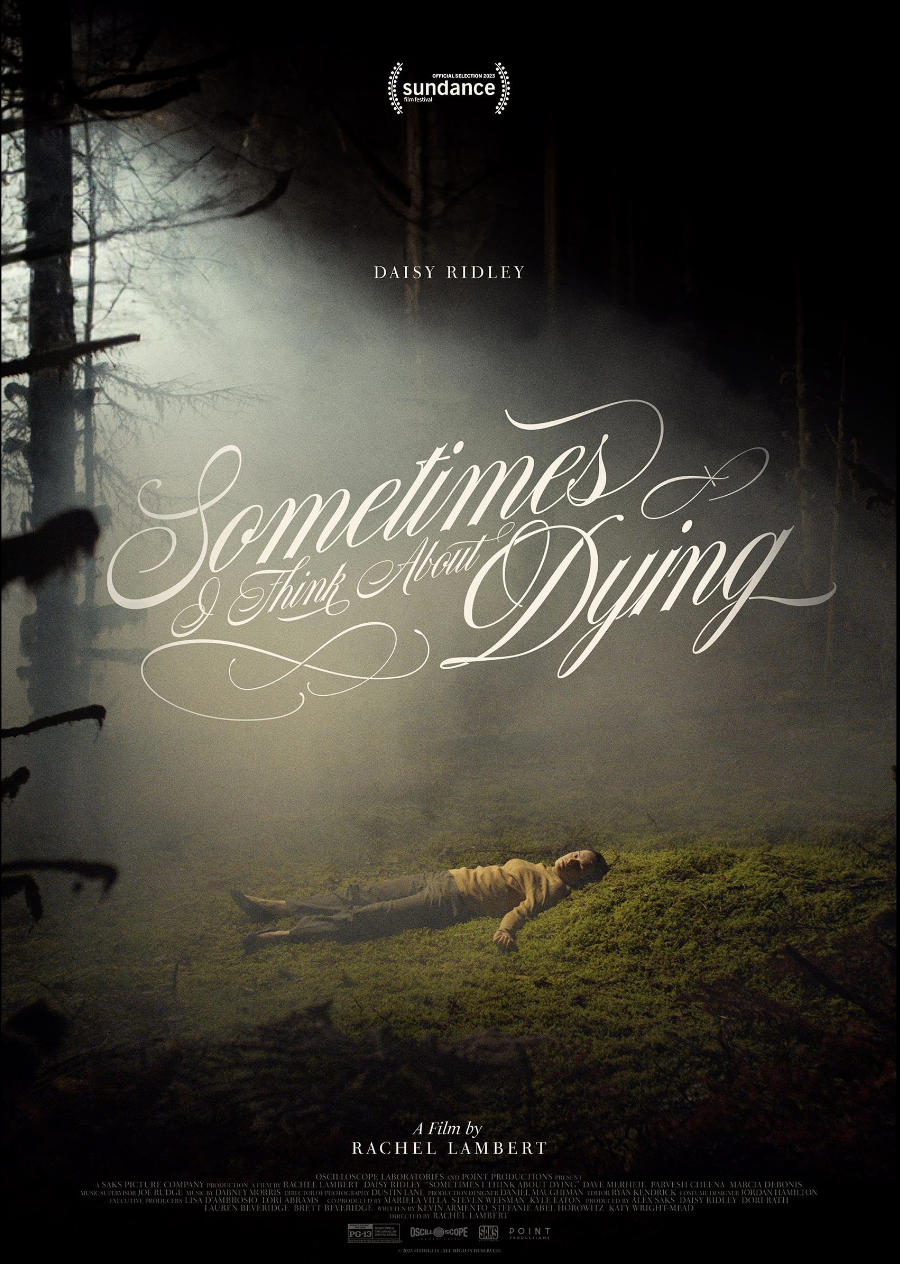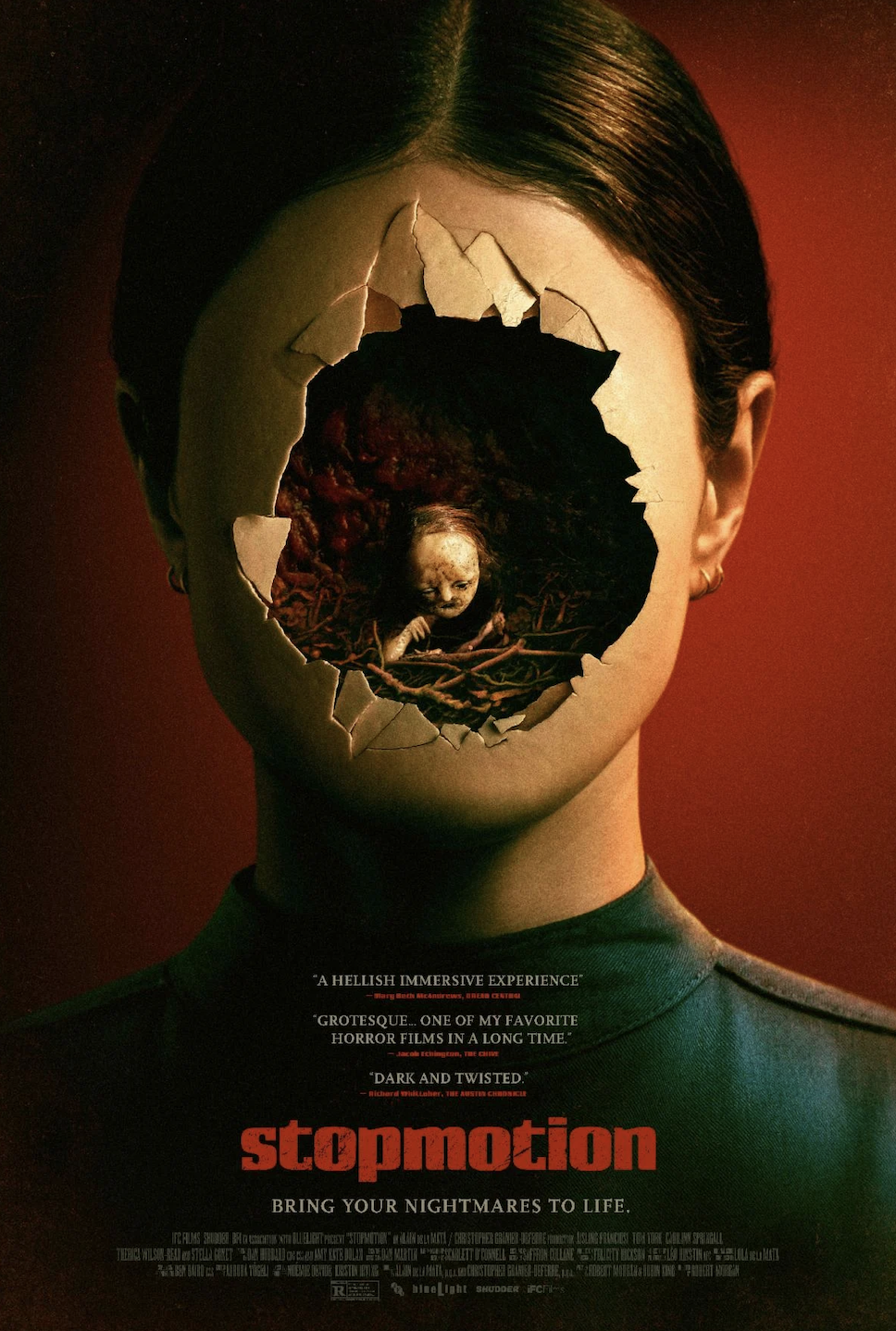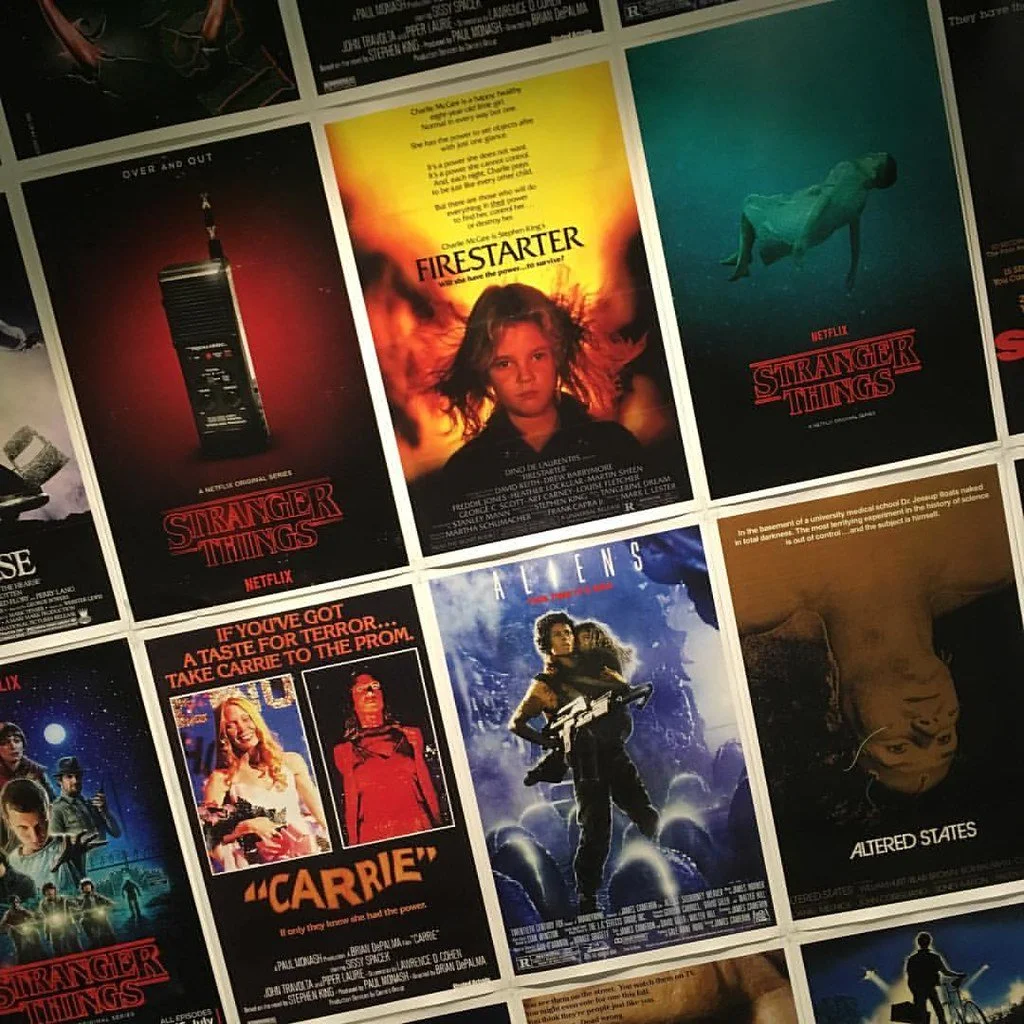Office romance gets existential in ‘Sometimes I Think About Dying’
‘Anyone But You’: The start of a rom-com renaissance?
The immense popularity of the new romantic comedy “Anyone But You” has led some critics to hail the start of a rom-com renaissance. The film was a box office success, earning more than $200 million globally, and has begun trending on social media. It has even started a TikTok trend featuring the end credit song “Unwritten” by Natasha Bedingfield, which has made the Billboard Top 20 in the U.K. for the first time in 19 years.
‘Stopmotion’ elevates the inanimate to something terrifying
Cliches rise from the dead in ‘Lisa Frankenstein’
Eli Roth’s “Thanksgiving” is a failed attempt at a modern slasher
Yorgos Lanthimos’ ‘Poor Things’ and its strange approach to the coming of age genre
Yorgos Lanthimos’ latest film, “Poor Things,” is a bizarre yet hilarious reimagination of Mary Shelley’s “Frankenstein.” The film, based on a novel of the same name written by the Scottish author Alasdair Gray and published in 1992, uses mesmerizing cinematography inspired by surrealist art, catches the viewer’s eye and engages them in this eccentric coming-of-age story.
Mean Girls flounders in the space between remake and copy
Depending on your age, “Mean Girls” might mean any number of things to you. The franchise has undergone numerous transformations over the years. The 2004 movie was adapted from a 2002 nonfiction book called “Queen Bees and Wannabes” by Rosalind Wiseman. The movie was followed by a 2011 sequel, then adapted into a 2017 Broadway musical with a book by Tina Fey. Unfortunately, the stellar legacy of the narrative has been tarnished by the 2024 remake, which haphazardly combines both movie and musical without adding anything of its own.
Todd Haynes’ film ‘May December’ illustrates life after grooming
‘Napoleon’ falls short, and not just because it’s all made up
On Friday, Dec. 3, the Mount Holyoke History Department sponsored a trip to Tower Theaters to see the latest historical epic. Unfortunately, Ridley Scott’s “Napoleon” was a disappointment — the tone and the narrative are incomprehensible. It feels like the film can’t decide between being a warrior epic, a tragic love story or a comedy. It's not impossible to do all three, so it’s a letdown to see a skilled director like Scott fumble.
Sofia Coppola’s “Priscilla” finally tells Priscilla Presley’s story
Sofia Coppola’s latest film “Priscilla” gives audiences a window into the life of Priscilla Presley, based on the latter’s 1985 memoir “Elvis and Me.” The film’s story begins at a party in Germany in 1959, where a 14-year-old Priscilla (Cailee Spaeny) and 20-four-year-old soldier Elvis (Jacob Elordi) first meet. As other characters point out the couple’s obvious age gap — “She sure is young isn’t she? Like a little girl” — Coppola begins the story of a young, impressionable girl caught in the trap of fame and fortune.
“Mutt” brings a complex portrait of a queer, trans man to the big screen
Nicolas Cage is a bloodsucking professional in new Dracula film
“Renfield” is a ridiculous, campy and excessively gory new adaptation of the story of Dracula — it is fantastic, provided that those adjectives appeal to you. The film pays its dues to the Draculas that came before it, even making direct cinematic references to the 1931 “Dracula” starring Bela Lugosi. The backstory comes in a “flashback” montage that recreates moments from that film, including the iconic lighting that illuminates just his eyes. Set in present-day New Orleans, Robert Montague Renfield (Nicholas Hoult), Dracula’s familiar, finds himself hoping to escape Dracula’s control. He has been serving Dracula (Nicolas Cage) for 90 years, bringing him victims and defending him from his enemies. In exchange, he receives agelessness and a fraction of Dracula’s powers, which he activates by eating insects.
‘Skinamarink’ turns childhood fears into analog horror
Graphic by Gabby Ganon ‘24.
Woodlief McCabe ’23
Staff Writer
Horror movie enthusiasts seem to be polarized by Kyle Edward Ball’s new film, “Skinamarink,” released in theaters on Jan. 13, 2023. For some, it’s the most afraid they have been in a theater since “Poltergeist” in 1982. For others, it’s laughable to even be scared. With curiosity, I visited Amherst Cinema for a nighttime showing.
“Skinamarink” starts extremely slowly. A long portion is spent on completely nondescript angles of a home, especially the edges and corners of walls and furniture. It appears familiar — it could be anyone’s house, even yours — and yet it’s completely disconnected from how we navigate our living spaces. Through the perspective of the two young children in the home, Kevin and Kaylee, the doors, windows and toilet go missing, one after another, trapping the family.
For a while, this is the extent of the “horror.” It is simply unsettling, as we wait to know more, powerless to reach out and pan the camera just a few feet. The film dwells in this space of discomfort and anticipation. I was beginning to think that I would be one of those unaffected viewers, that I had conditioned myself too well against the tricks of the genre. Sure, chairs on the ceiling and dolls stuck to the walls are spooky, but no sweat. I was proud of myself, but a little disappointed.
And then something switched. The suspense reaches greater intensity, and the slowness starts to pay off. This moment for me came during an eerie scene about forty minutes into the film, when Kaylee goes to her parents’ bedroom and finds them sitting on opposite sides of the bed, facing away from her. This is the most interaction we have with the parents. Kaylee hears a voice speaking to her from the darkness and soon, Kevin finds himself completely alone. There is something tangible to be afraid of now. Though it barely speaks, the entity’s power is palpable. Once it appears, the film’s tone is much more sinister.
“Skinamarink” is an analog horror. Borrowing from the “found footage” style of horror popularized by “The Blair Witch Project”, analog is an experimental genre. Its themes and motives are cryptic and unsettling, and it opts for low-quality images and sound. In “Skinamarink,” childhood nostalgia, especially of the ‘90s and early ‘00s, is contorted into potential conduits for torment.
The camera returns to shots of the television playing 1930s cartoons, playing scenes with eerie similarities to the children’s predicament. The entity that is controlling the home manipulates these images too. A disappearing rabbit plays on a loop over and over again. The repeated image and its corresponding music become overwhelming, almost nauseating. The symbolism can be fairly heavy-handed at times, which is perhaps why the television is a site for conveying information rather than fear. It is a reminder that there is something or someone else in control. The looping television screen is just one way that the film manipulates time. We realize that the children have been trapped in the home for weeks, even months. The horror in the helplessness builds up the anxiety, even when things on screen are tame out of context.
Though the dialogue is sparse, we hear a mix of eerie unidentifiable noises, sounds of crying and objects breaking in another room. Much like the visual elements that exist just offscreen, the sound is begging its viewers to strain our ears so it can give us another atonal shriek, hum or cut to total silence.
“Skinamarink” constructs horror from what is not seen. It terrifies by hinting at the unknown rather than explicitly showing, like household items in the corner of the screen, and faces turned away from the camera. That being said, it takes a long time to pay off. Suspenseful as it is, “Skinamarink” is a test of patience. I could not fault a viewer for frustration, annoyance and even boredom, at least for the first half hour.
If you are hoping for a monster movie or a killer lurking in the shadows, this isn’t that. It is not full of jumpscares or extensive gore, though, for those who might be sensitive to those things, there is implied violence and scenes containing blood splattering. “Skinamarink” plays on the primal fears and anxieties of childhood, especially of the dark and being left alone. The dim light and grainy quality of the image play tricks on us, akin to how when we were children, the shadows of chairs and coats in our dark bedrooms stretched to appear like human figures.
The film withholds information. The camera avoids the action, keeping it out of frame. It limits dialogue and chooses not to explain anything. It feels like being a child and knowing something is wrong, but as much as you ask, the adults in your life just won’t tell you. Or worse, they ignore the question. Kevin asks, “where did it go?” about the doors. He never gets an answer.
There are only one or two genuine jumpscares, and I think that’s to the film’s benefit. It requires us to constantly think of what might happen. With an antagonist with no defined physical form and potentially limitless abilities, there is no formula to the fear. I expect that detractors heard it was scary and expected wall-to-wall violence and grotesquery. Niche sub-genre films often experience greater scrutiny, and “Skinamarink” is no exception.
This film proves that fear can be brought about by tapping into the simplest elements of emotion. We develop a sense of fear in childhood to keep ourselves safe, but what about when we are afraid of something we cannot even name?
I don’t think making every second of the film nail-bitingly terrifying is necessary. Otherwise, we become desensitized, requiring outlandish methods to elicit a reaction. When “Skinamarink”lets us pause, or even expect nothing to happen, the filmmakers have the upper hand.
Mount Holyoke students review ‘The Menu’
Luca Guadagnino’s ‘Bones and All’ is a feast for the senses
An eerie atmosphere surrounds Maren Yearly (Taylor Russell) as she drifts quietly through her first few scenes, which effectively build up to a tender moment of friendship, turned terrifyingly into cannibalism. With Maren and her friend Kim (Madeleine Hall) lying on the ground and shot through a glass table, the audience sees nail polish laid out on the tabletop, visually representing innocent girlhood. The sleepover takes a turn as Maren moves closer to Kim in a seemingly affectionate way before chomping down on her finger.
Cate Blanchett delivers her best performance yet in new, biting film ‘Tár’
Amid the multiple Halloween movies released this month, director Todd Field’s “Tár” was a standout. Starring Cate Blanchett as Lydia Tár — the movie’s protagonist and namesake — the film follows one of the best maestros of her generation as she prepares to perform the only one of composer Gustav Mahler’s symphonies that she has never tackled.
Ten horror movies to watch this spooky season: An October guide
Fall is upon us, and at Mount Holyoke it’s easy to tell due to the beautiful foliage, an increase in Doc Martens worn around campus and whispers of spooky season in the air. Halloween isn’t that far off, and if you’re looking for a way to get into the spirit of the season, here are some horror movie recommendations to guide you.
“Don’t Worry Darling” makes theater debut
“Don’t Worry Darling,” starring Florence Pugh and Harry Styles was released in U.S. theaters on Sept. 23, 2022. According to Forbes, the film “won the weekend domestic box office with a $19.2 million opening and the approval of fans.” The film, directed by Olivia Wilde, follows a 1950s housewife, Alice (Pugh), who discovers the truth about her husband Jack’s (Styles) job at an organization known as the Victory Project. The cast also features actors Chris Pine and Gemma Chan.
‘Pearl’: A love letter to classic slasher films fosters nostalgia and originality
Despite being a prequel, “Pearl” is able to stand on its own within the slasher genre while paying a beautiful homage to the classics. Symbolism is at the heart of all great slasher films, and A24 is no stranger to engaging it. A24 films often use color to show a transformation and to establish a character’s identity. Older horror films often use color as well, especially red to symbolize that the worst is near and to show the manifestation of repressed rage. West doesn’t try to give movie-goers something too different but plays on nostalgia and maintains what makes a slasher film good while still orienting it for modern audiences through costuming, re-imagined cliches and allusions.


















